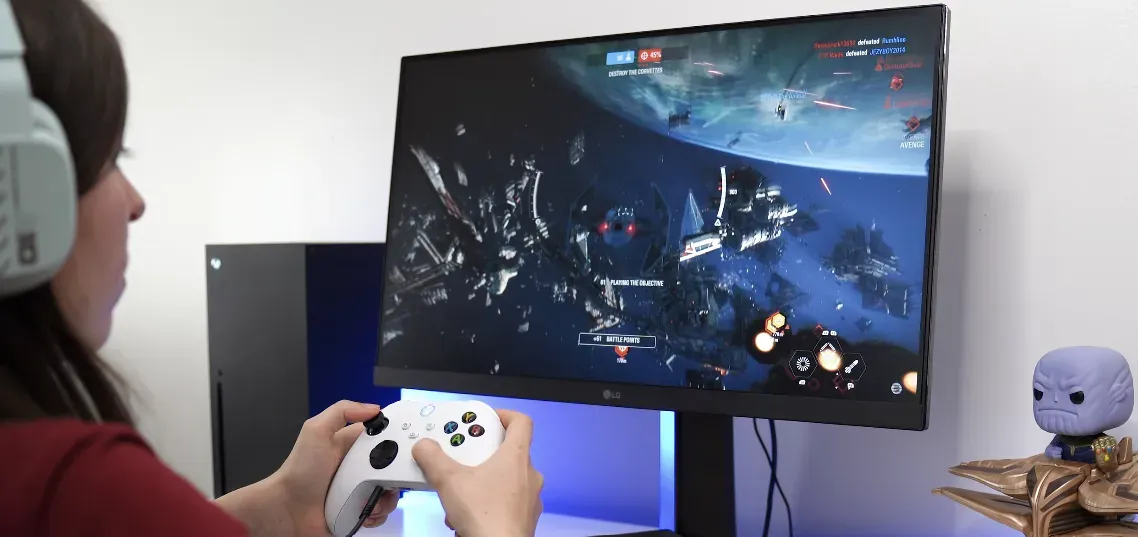How To Choose The Best Gaming Heatsets
A good pair of gaming headphones can elevate your gaming experience, but with so many options, choosing the right one can be tricky. When you're hunting for the ultimate gaming headset, focus on these key features to level up your audio experience.
Type Of Gaming Headset
When it comes to gaming, there are three types of headsets.
-
In-Ear Headsets: Compact and portable, these sit directly in your ear canal. Perfect for mobile or handheld gaming, but they often lack the immersive sound quality needed for console or PC gaming.
-
On-Ear Headsets: Resting on top of your ears, these are lighter and more portable than over-ear models but may sacrifice some comfort and sound isolation during long sessions.
-
Over-Ear Headsets: Fully covering your ears, these are usually the best choice for gaming. They offer superior sound quality, better noise isolation, and comfort for extended play.
You’ll also want to decide between wired and wireless headsets. While wired headsets deliver zero-latency audio and are typically more reliable for competitive gaming, wireless headsets offer freedom of movement and fewer cables but may come with slightly higher latency and the need to manage battery life.
What Platform Do You Use?
First, ask yourself which platform you want to play on. Some gaming headsets are specially designed for specific consoles, and using the wrong one may prevent you from getting the full audio experience.
For PC gaming, most gaming headsets are compatible with PCs, connecting via USB or 3.5mm jacks. When choosing a headset, look for features like surround sound and customizable EQ settings, often supported through dedicated software. Standard connection options include USB and analog, and some headsets even come with a USB sound card for improved audio performance.
Selecting the right headset depends heavily on your PC system so you need to consider your needs carefully to find the perfect match, whether you want to find the best gaming PCs or gaming PCs that are under $1000.

For PlayStation (PS4/PS5), headsets can connect through a 3.5mm jack or USB dongle, with 3D audio support offering a more immersive experience. Xbox (Xbox One/Xbox Series X|S) headsets connect via the controller’s 3.5mm jack or require a wireless adapter, with some models optimized for Xbox audio profiles.
The Nintendo Switch supports wired headsets through a 3.5mm jack, and Bluetooth wireless headsets can work with the setup. Lightweight and portable designs are ideal for Switch gaming.
And the gaming headsets for mobile devices connect via 3.5mm jack or Bluetooth and are designed for comfort during extended sessions. Look for models with built-in audio and microphone controls, making it easy to adjust sound or chat while on the go.
Build Quality and Durability
When choosing the best gaming headset, build quality is one of the most important factors to consider. Entry-level headsets often use plastic construction to keep costs low, but these can creak, wear quickly, and require extra care. Premium models, on the other hand, feature steel or aluminum frames, offering better durability, flexibility, and resistance to daily wear and accidental drops.
A durable gaming headset should withstand long hours of gameplay while maintaining comfort and performance. While plastic headsets are lightweight and affordable, investing in a metal-frame headset usually provides better value over time. Check for features like replaceable ear pads and detachable cables, which also extend the life of your headset.
Finally, always consider the brand reputation and warranty when buying a gaming headset. Choosing a durable, well-built headset not only improves your gaming experience but also protects your investment over the long term.
Sound Quality
Sound quality is critical for both immersive gameplay and competitive advantage. When selecting the best gaming headset, pay attention to frequency response, driver size, impedance, sensitivity, and features like surround sound or noise cancellation.
Frequency Response (Hz): Frequency Response measures the range of sounds a headset can reproduce. Standard human hearing ranges from 20Hz to 20kHz.
- Low frequencies (20Hz–250Hz)<






















